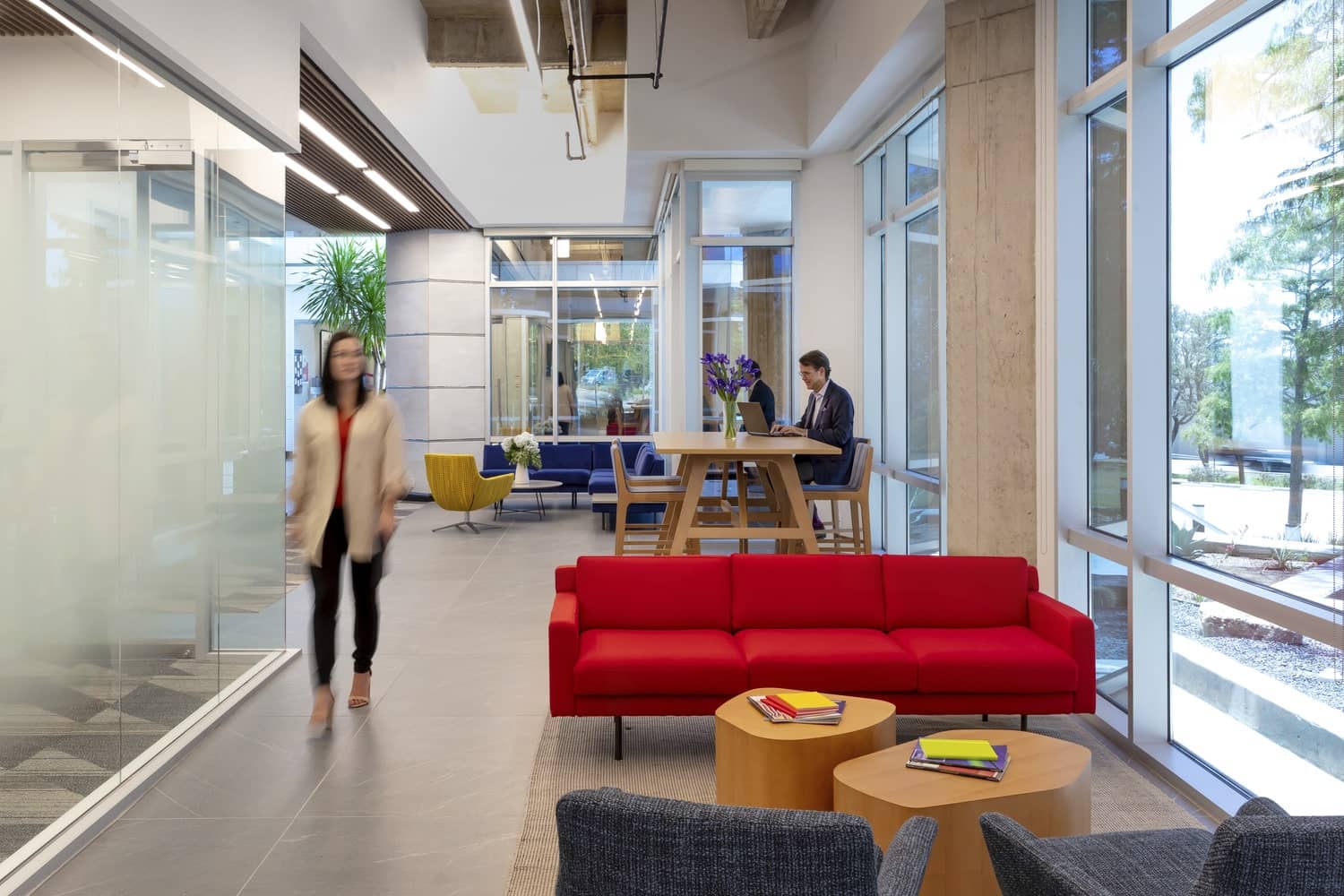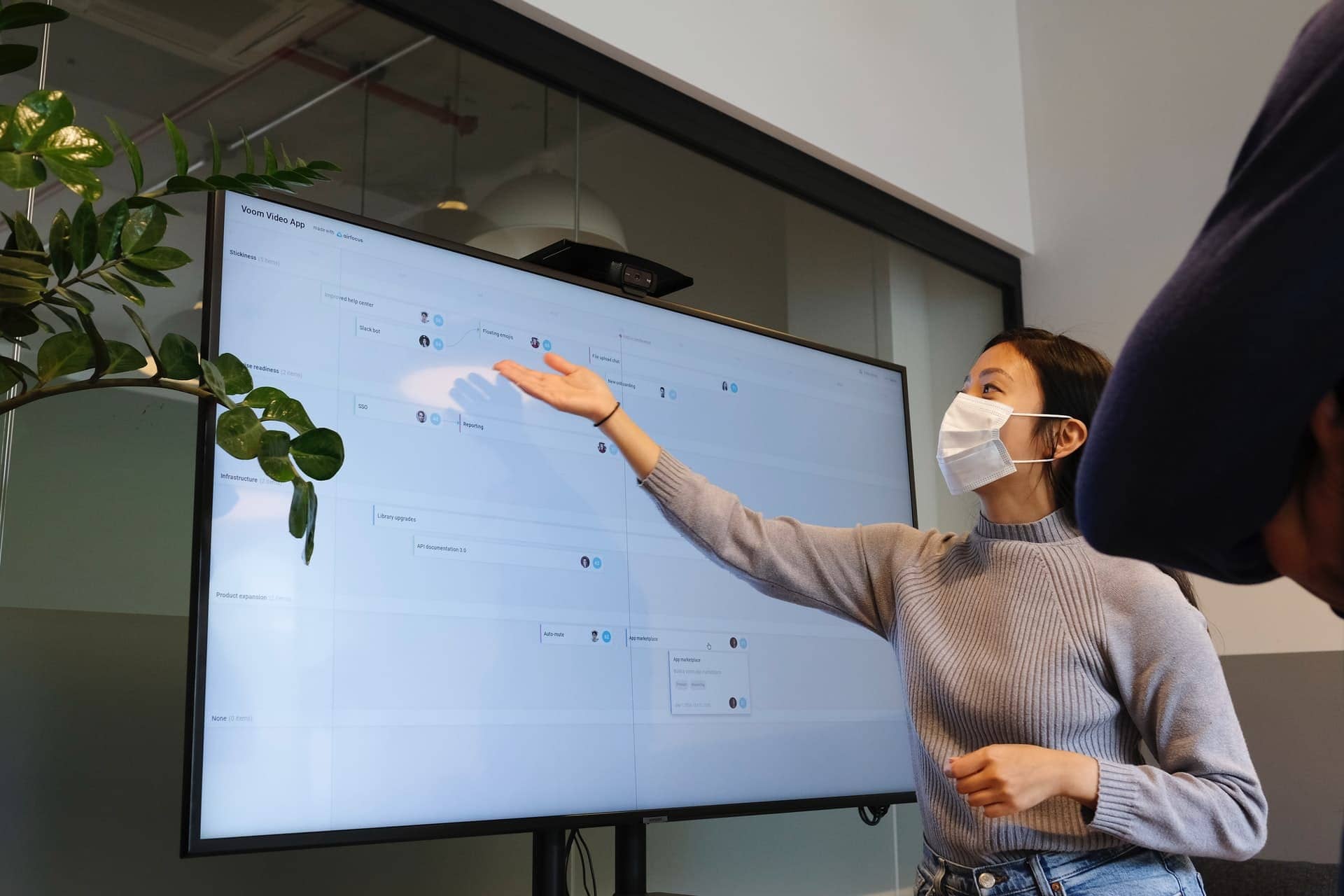The return-to-office movement is live, it’s real, and it’s the future of the office. As a result, workplace expectations are changing across the country and new office standards are being hashed out — company by company, team by team.
Hybrid Work Schedules Redefined
We now have a strong and growing return-to-office (RTO) movement, one that includes hybrid work schedules where many employees — but far from all — are in the office or physically meeting with clients several days a week.
As Goldman Sachs CEO David Solomon told CNBC, “Before the pandemic, about 75% of our people were in the office on any given day of the week. Today, it’s about 65%. So, we’re kind of operating close to the way we were.”
Goldman isn’t alone. RTO expectations are becoming more widespread.
- The White House has directed Cabinet agencies to bring federal workers back into the office more frequently in the coming months.
- Major tech companies with three-day policies for many office workers now include Meta, Google, Apple, and Amazon.
More Flex Space is on The Way
To accommodate the hybrid schedule trend, companies are increasing flex space usage. In 2021, for instance, Salesforce launched a continuing effort to provide its employees with a more hybrid workstyle, redesigning workspaces as community hubs.
“Gone are the days of a sea of desks,” said Salesforce President Brent Hyder. “We’ll create more collaboration and breakout spaces to foster the human connection that can’t be replicated remotely.”
Combine hybrid schedules with flex-space configurations and new management requirements emerge. For instance, workers and employers must know where Smith and Jones are during the workday and which of them will use Conference Room #6 at 11:00 a.m. on a Tuesday. Personnel scheduling and facilities planning are now more critical in the search for greater productivity.
Employer Mandates Versus Employee Expectations
While managers might prefer employees in the office more of the time, workplace mandates are limited because many employees have leverage and prefer remote work. And although employees have more options than before the pandemic, they still have practical issues to consider.
First, while unemployment levels are low, there is some job uncertainty in the marketplace. For instance, Layoff.fyi reported that more than 225,000 tech workers had been fired between January and early August, 2023.
Second, there are bills to pay regardless of one’s employment preferences and inflation. According to a report by PNC Bank, 87% of employees admit to worrying about personal finances on the job — admitting to spending as many as three hours a week resolving personal tasks not related to work.
ADP, in its People at Work 2023: A Global Workforce View study, found that workers are most concerned with salary (61%), job security (43%), and career progression (40%, up from 23% last year). Alternatively, flexible hours were regarded as important by 29% while a flexible location was at 17%.
Third, working from home has produced a range of employee reactions. Some might prefer more office engagement while others strongly want to retain their remote status.
Morning Consult, in an April study, found that “predictions that the future of work would be entirely remote never came to fruition. Not only has the share of U.S. adults working remotely dipped compared with last year, but pluralities still prefer to work in person. And remote employees say completing work tasks at home is more difficult.”
Fourth, remote work may not lead to expected levels of career advancement. As Deloitte explains, “While remote working has improved respondents’ engagement and well-being, most of those surveyed believe remote work models will put them at a disadvantage. This could erode engagement and commitment levels over time.”
Finding Middle Ground
During the pandemic, many employers saw remote work as a new and viable option. That view is now changing.
Michael Bloomberg, writing in The Washington Post in August 2023, pointed out that while “some early research found that remote employees were more productive than those in the office, newer studies are finding the opposite.”
“Remote work’s organizational benefits, if any, are likely to fade with time because the first months of working from home can draw on established relationships and office-based patterns of collaboration,” he said. “With time and as workers change jobs, these understandings break down. In jobs where productivity is hard to measure, face-to-face supervision and mentoring are especially important.”
As a result of evolving employee desires and changing employer preferences, return-to-work programs are likely to be gradual, perhaps starting with two or three days a week.
Next, there might be increased office times that are fine-tuned according to team needs, office requirements, and customized understandings with selected employees.
Case in point, preeminent Minneapolis law firm Fredrikson & Byron, which occupies eight floors of KBS’ Class A office building, 60 South Sixth, provides each attorney access to an individual office. Many have selected designated offices — while other attorneys can reserve individual offices via a digital schedule.
Today’s Office Spaces Reimagined
The RTO movement does not require a trip back to 2019. Instead, the new office model emphasizes meeting in the middle, wherever the “middle” might be between employees and employers. The characteristics of this new office environment go beyond hours and wages.
Part of the criteria that led Fredrikson & Byron to 60 South Sixth was workspace where employees could truly thrive as a team while digitally accessing all of the information needed through a computer connection. — a situation not fully realized in their previous location. “We have much more meeting space on our practice floors,” said Fredrikson & Byron executive committee member Jamie Snelson in Twin Cities Business. “So while our individual offices are smaller, we’ve got much more meeting space for us to collaborate in person and hybrid.”
Ann Rainhart, the firm’s CEO, adds that “sometimes we’re in person, sometimes we’re on the phone, sometimes we’re on Zoom, and sometimes we’re in a big meeting and we want to be able to flow between rooms and spaces and do that effectively,”
Flexibility counts. Employees are part of the team. Their input should be sought when considering such matters as office design, the use of space, and scheduling.
It’s not just work. Employees today are looking for a better work/life balance. A 2023 study by the Society for Human Resource Management (SHRM) reports that “as employers consider ways to support their employees’ mental health, the concept of having permission to take mental health days has broad appeal.
“It is also important to look at a full spectrum of mental health offerings. Balancing formal mental health services with self-service educational resources, team-building events, and yoga or other exercise classes may encourage employee participation and satisfaction.”
Consider the employee’s perspective. Changing RTO policies can impact employee lifestyles. Going back to the office may mean a return to commuting and the need for daycare. Employers must understand such challenges and have flexibility when dealing with returning employees.
Take advantage of smart building technologies. Use smart building technologies to enhance workplace experiences and measure productivity. Employ the new array of workplace apps and sensors to manage modern workspaces. And remember that sometimes the best new “technology” is a concierge, someone to schedule facilities, arrange meetings, and coordinate organizational activities such as team-building events.
Follow the flight to quality. To attract the best employees, it makes sense to provide the best facilities.
“Experts are seeing a ‘flight to quality’ among companies that use offices,” said KBS CEO Marc DeLuca in Forbes, “and some predict newer Class A office buildings as one of the asset types that will see the highest amount of leasing activity in 2023. With roughly 80% of office leases being signed in buildings that are Class A, I am witnessing companies increasingly seeking fresher, modernized office space to house their teams.”
You can see evidence of this flight-to-quality trend in Manhattan, New York. CompStak, a national commercial real estate data and analytics platform, found that since the pandemic began:
- “More than 27% of technology, advertising, media, and information (TAMI) tenants relocated from Class B to Class A buildings.”
- “A majority of tenants relocated to newer (more recently built) office buildings.”
- “More than 30.5% of relocations moved to new or renovated construction (built or majorly renovated since 2015) since April 2020.”
What are office buildings, anyway?
A key to success in the new commercial real estate market is understanding that office buildings are really about community. KBS’ Accenture Tower in Chicago, for instance, is a quintessential mixed-use building that exemplifies this community mindset. In addition to deluxe office amenities, the location features 70,000 square feet of retail and more than 20 fast-casual and dine-in restaurant options on-site. Recent renovations have helped bring the 1.46 million-square-foot building reach more than 98% in leasing occupancy.
Darrel Fullbright and Duncan Lyons with Gensler — an international architecture, design, and planning firm — point out that “office buildings are no longer just containers for people but rather an experience supercharger. Office performance should be less about maximizing workplace density and more about the quality of the space and the experience it delivers.”
They add that “working at the office provides one thing we have been craving during the pandemic: in-person, human connection. Once we feel it’s safe to go back, we will seek out the spaces that celebrate and support the ways we work together: social spaces that help to build community and allow real-time collaboration.”
Learn more by visiting KBS.com/Insights.




